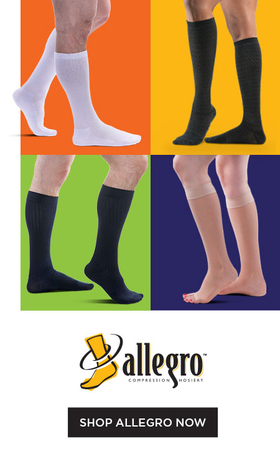There are many accessories available to assist with the donning of compression stockings.
Donning gloves are one of the most useful and inexpensive donning accessories. Gloves not only protect the stocking from snags and runs, they allow you to get a good grip on the fabric. It's very easy to smooth out wrinkles and adjust the length by using the palms of the gloves. We sell 2 rubber donning gloves, Medi and Sigvaris, and a cotton glove that has been dipped in rubber from Jobst.
Another very useful donning accessory is silicone lotion. The lotion makes your legs very slippery for a short period of time, so the stockings can easily slide onto your foot and up your leg. Silicone lotions are hypoallergenic and won't harm the fabric of your compression stockings. Alps Fitting Lotion is available in a 4oz squeeze bottle.
Easy-Slide is a nylon sleeve you put on your leg before donning your stocking. The ripstop nylon is very slippery and makes it much easier to don high compression stockings. There is an Arion® Easy-Slide for open toe stockings and the Arion Magnide® for closed toe stockings.
If you have difficulty bending at the waist, consider using a stocking donner. Stocking donners or butlers are metal frames with handles on each side. You slide the stocking onto the frame, and then step into the stocking. Pulling up on the handles, pulls the stocking up your leg.


